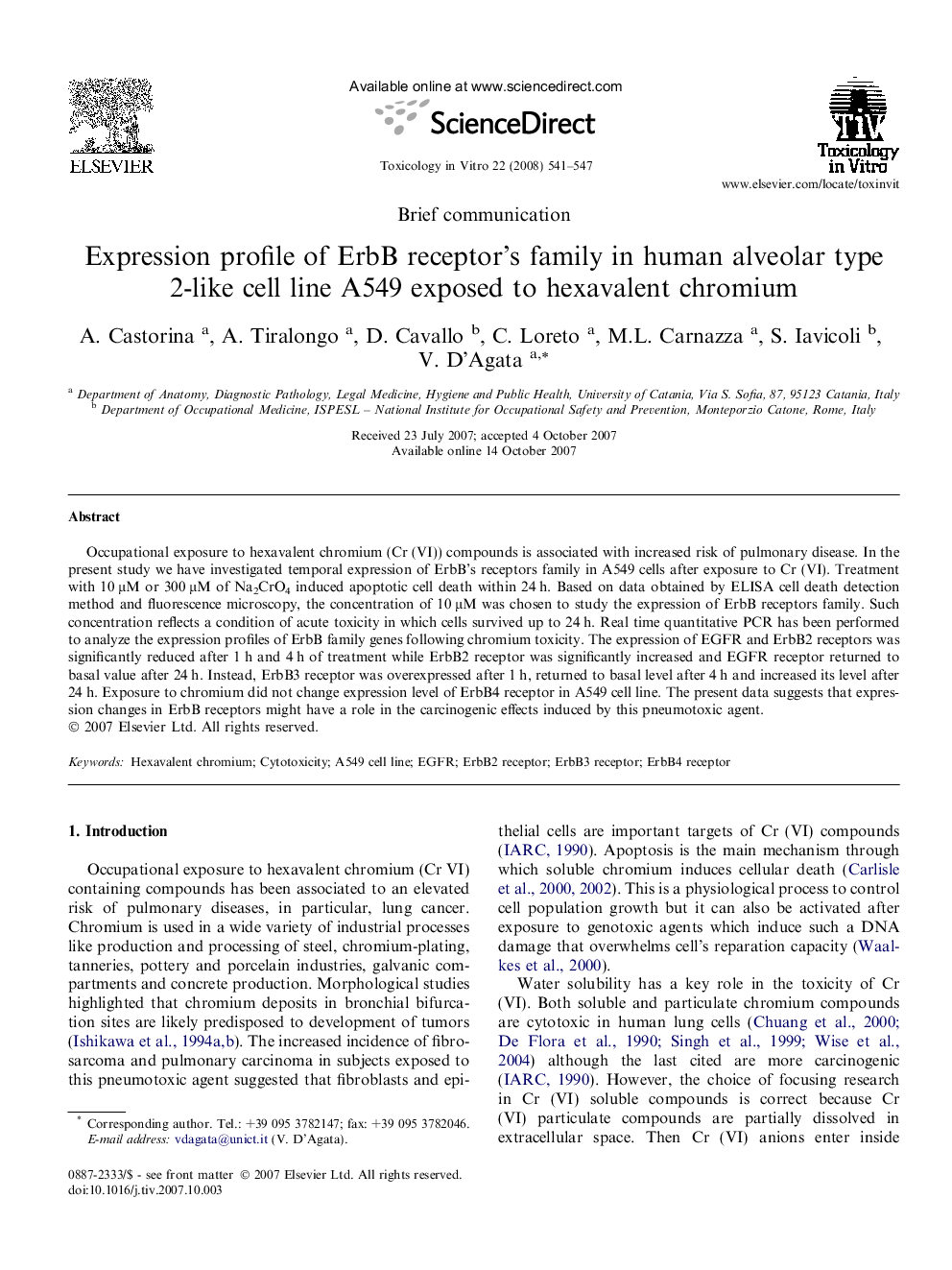| Article ID | Journal | Published Year | Pages | File Type |
|---|---|---|---|---|
| 2603514 | Toxicology in Vitro | 2008 | 7 Pages |
Occupational exposure to hexavalent chromium (Cr (VI)) compounds is associated with increased risk of pulmonary disease. In the present study we have investigated temporal expression of ErbB’s receptors family in A549 cells after exposure to Cr (VI). Treatment with 10 μM or 300 μM of Na2CrO4 induced apoptotic cell death within 24 h. Based on data obtained by ELISA cell death detection method and fluorescence microscopy, the concentration of 10 μM was chosen to study the expression of ErbB receptors family. Such concentration reflects a condition of acute toxicity in which cells survived up to 24 h. Real time quantitative PCR has been performed to analyze the expression profiles of ErbB family genes following chromium toxicity. The expression of EGFR and ErbB2 receptors was significantly reduced after 1 h and 4 h of treatment while ErbB2 receptor was significantly increased and EGFR receptor returned to basal value after 24 h. Instead, ErbB3 receptor was overexpressed after 1 h, returned to basal level after 4 h and increased its level after 24 h. Exposure to chromium did not change expression level of ErbB4 receptor in A549 cell line. The present data suggests that expression changes in ErbB receptors might have a role in the carcinogenic effects induced by this pneumotoxic agent.
